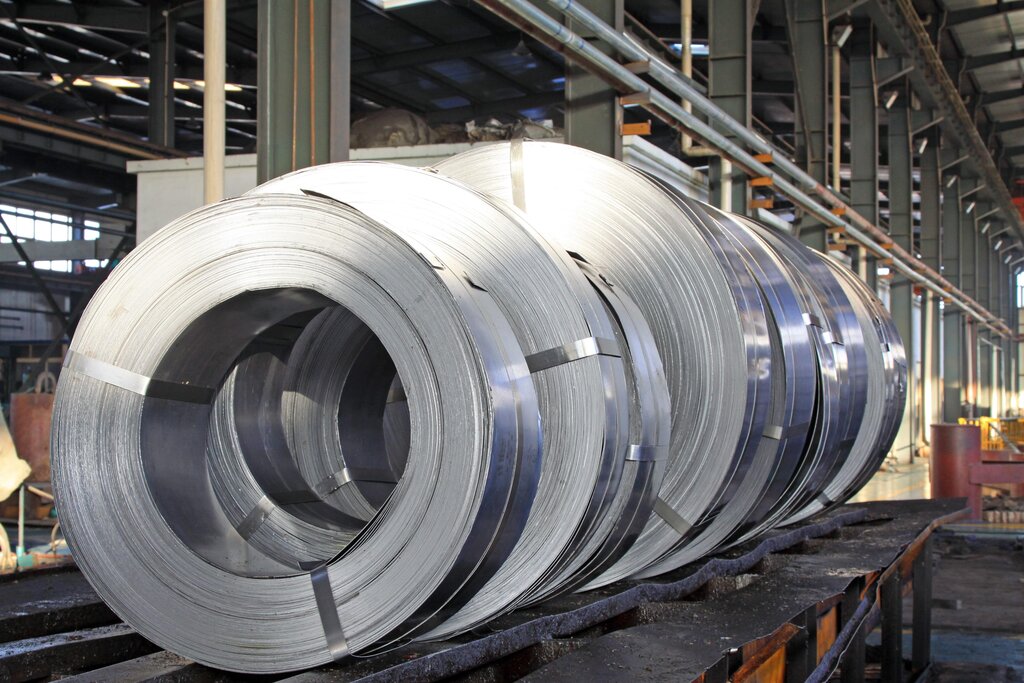As the automobile industry continues to advance towards sustainable practices, researchers have invested in green steel, a production process that can reduce the greenhouse effect.
—
The automobile industry often receives heat in the media for its notoriously high carbon emission rates. As the US makes strides to improve its sustainability, engineers and scientists have been on the search for material alternatives that produce less pollution to help transition towards carbon neutrality. As a result, low-emission steel variation has been developed, which could limit the material’s reliance on fossil fuels.
The production process supports President Biden’s Build Back Better strategy. He plans on slashing national pollution levels and improving employment rates by generating a sustainable infrastructure. As the auto industry adopts low-emission production methods, it can create additional high-paying green employment opportunities.
Why is Green Steel Gaining More Attention?
Traditional steel production methods generate the enhanced greenhouse effect. Manufacturers combine coking coal with raw iron to develop traditional steel. Heating fossil fuel creates greenhouse gas emissions, altering the atmosphere’s composition.
Naturally, Earth absorbs solar radiation, warming up the planet’s surface, uptakes additional energy and sends it into the atmosphere. Air pollutants compromise this process by increasing the sunlight-to-heat exchange rate. They also trap excess energy in the atmosphere, raising Earth’s temperature over time.
The transportation sector in the US generated 1.63 billion metric tons of emissions in 2020, and is one of the largest emitting countries in the world contributing to climate change. Various materials used in vehicle manufacturing significantly alter their carbon footprints. Mining iron and producing steel is energy-intensive, limiting the auto manufacturing industry’s sustainability.
Investing in Green Steel
Companies can enhance the eco-consciousness of production processes using renewable power. Green steel uses hydrogen instead of coal, eliminating combustion emissions. Manufacturers can coat iron ore with emission-less hydrogen, purifying the material and powering the furnace.
Green hydrogen differs from blue and grey versions because it derives from water. Solar and wind power fuel the production process, electrolysing the source. The method generates hydrogen and oxygen, eliminating greenhouse gases.
Professionals can also enhance vehicle production processes by recycling steel with clean energy. Companies can shrink their carbon footprints and decrease landfill pollution by repurposing old materials. Combining recycling processes with the use of green steel can significantly improve a manufacturing facilities’ sustainability.
Some manufacturers are concerned with adopting green steel because of its current prices. The most sustainable hydrogen form, green hydrogen, costs over two dollars per kilogram. Versions producing carbon emissions reach as low as 70 cents per kilogram.
Cost inefficiencies may turn companies away from green steel uses. It may also promote the production of steel from less sustainable hydrogen forms, generating ecological degradation. Fortunately, car manufacturing giants plan on adopting the material regardless, enhancing the sustainability of their production facilities.
You might also like: 7 Green Tech Examples Helping Mitigate Climate Change

Sustainable Production Methods
Mercedes and Volvo announced their plans to use green steel in the development of fossil-fuel powered cars. Both companies are utilising the material to achieve carbon reduction goals. Various companies are also enhancing the efficiency of their manufacturing buildings, further decreasing emissions.
Installing energy-efficient devices can limit a business’s reliance on fossil fuel-derived electricity. Smart devices, like programmable thermostats, evaluate a facility’s temperature and alter heating and cooling functions. Manufacturers can also connect smart technology through a centralised system, reducing general electricity uses.
Auto companies can also improve their eco-friendliness by enhancing the efficiency of the facility. Installing optimal insulation may significantly reduce one’s reliance on temperature control-related electricity. They can also increase the sustainability of their lighting systems by adding windows.
Lighting generates about 5% of greenhouse gas emissions globally. Renovating an auto manufacturing facility to enhance its natural lighting could decrease its electricity use. Adding light-emitting diode (LED) bulbs also improves a building’s efficiency by limiting its energy absorption.
How Consumers Can Help
Vehicle customers can increase the sustainability of manufacturing practices by voting with their dollars. Individuals can purchase cars composed of green steel, increasing the national demand. Over time, production facilities will decrease their emissions to meet the market’s needs.
Consumers can also support sustainable production facilities. Purchasing vehicles from energy-efficient manufacturers over environmentally degrading ones can promote eco-conscious development. It is helpful to research a company’s sustainability before purchasing a car.


















